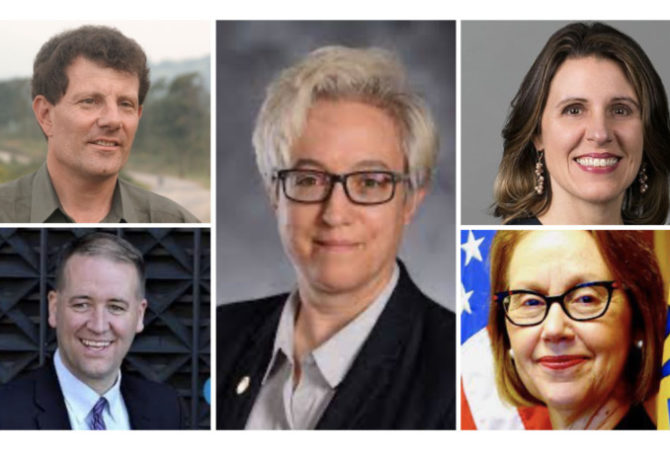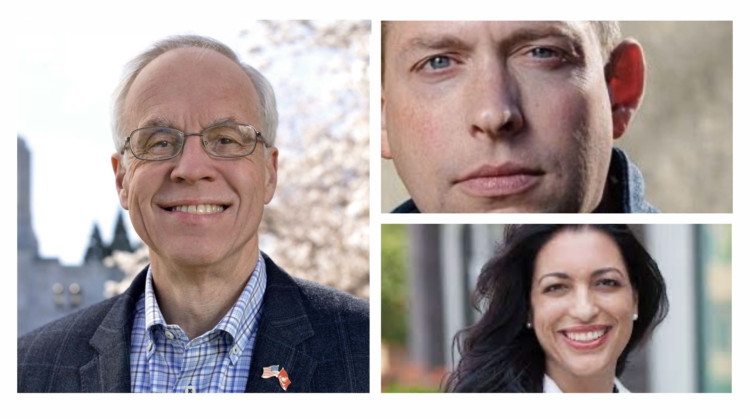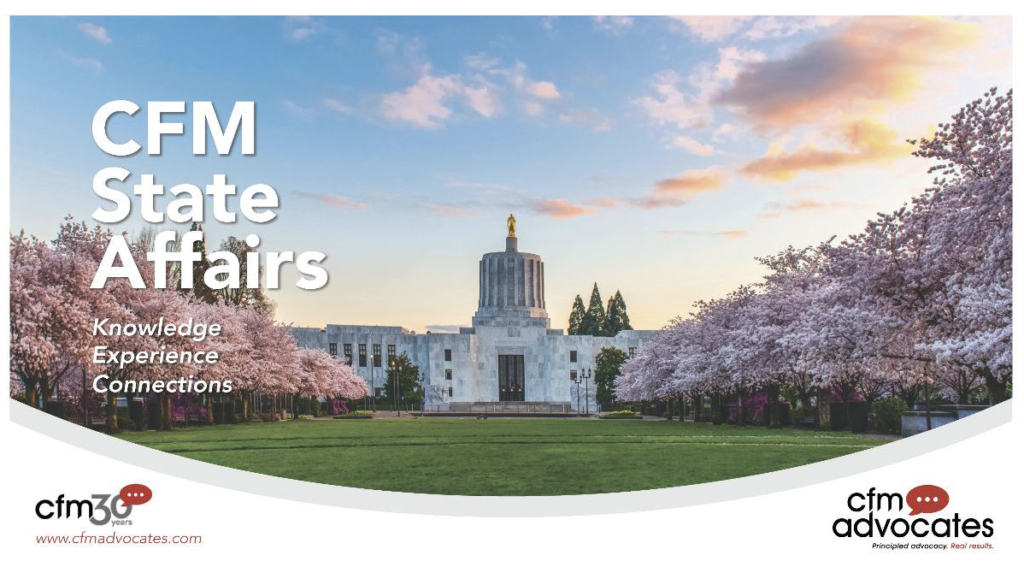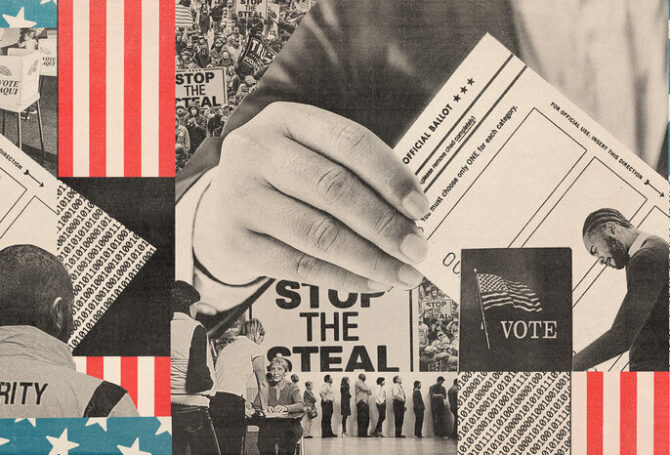
At least three Republicans are eyeing a gubernatorial run in 2022, but so far potential Democratic candidates are playing coy. That’s expected to change by Labor Day, the unofficial kickoff of political campaigns for statewide office when Democrats can meet face-to-face at picnics with union leaders over a burger and brew.

Two Republicans have officially entered the race – Medford small business owner Jessica Gomez and Dr. Bud Pierce of Salem who lost to Governor Brown in her successful 2018 re-election bid. Sandy Mayor Stan Pulliam has formed an exploratory committee and says he will undertake a statewide listening tour before deciding whether to jump into the GOP primary.
Lots of names have been floated in what will be the first Democratic primary with no clear frontrunner in 20 years. House Speaker Tina Kotek of Portland, Multnomah County Chair Deborah Kafoury, Labor Commissioner Val Hoyle, Attorney General Ellen Rosenblum and treasurer Tobias Read are among the most prominent elected officials contemplating candidacies or mentioned as candidates to succeed Brown, who cannot seek re-election because of term limits. Nicholas Kristof, a New York Times columnist who lives on a farm in Yamhill County, may be the most notable non-elected official looking to run.
Secretary of State Shemia Fagan has made the most definitive statement about the 2022 gubernatorial race, declaring she intends to fulfill her four-year term as she pledged when she ran and won her post in tightly contested election in 2020.
Being the first to declare a candidacy is usually a good political strategy, especially for promising, but unknown candidates and for presumptive frontrunners. Gomez followed that strategy by being the first candidate to announce, which was followed shortly afterward by Pierce. The tried-and-true strategy hasn’t been a factor in the Democratic race where potential frontrunners have expressed degrees of interest, but demurred on a definite decision.
Kotek begged off making a public declaration until after adjournment of the 2021 legislative session. Kafoury, who cannot run for re-election as Multnomah County chair because of term limits, is weighing her decision as her husband, Nik Blosser, heads to Washington, DC as President Biden’s Cabinet chief of staff.
Hoyle from Eugene, who won her statewide post in 2018 after she ran unsuccessfully in the 2016 Democratic primary for secretary of state, says her current plan is to run for re-election in 2022. Rosenblum of Portland, Oregon’s first female attorney general, has held her office since 2012 and previously was a judge on the Oregon Appeals Court. She ran unopposed in her 2020 re-election bid, so she has leftover campaign cash. Read is serving his second term as state treasurer after his 2020 re-election. Read represented the Beaverton area for 10 years in the Oregon House.
Former Beaverton state Senator Mark Hass, who lost to Fagan in the 2020 Democratic primary for secretary of state, has the credentials to mount a campaign and the experience of running a statewide campaign, but so far he hasn’t shown any interest in the race. Portland Mayor Ted Wheeler, the former state treasurer who was once viewed as a serious gubernatorial contender, is virtually out of the picture in 2022, despite his re-election last year.
The most definitive Democratic gubernatorial declaration has come from Rukaiyah Adams, chief investment officer for the Meyer Memorial Trust, who confided to The Oregonian that she plans to run for governor, just not in 2022.
There are political reasons for Democratic candidate reticence. One reason is the advent of a new congressional district that will be up for grabs next year. Another is which candidate public employee unions will decide to back. Public union support was critical to Fagan’s election last year and is likely to represent one of the biggest backers of a 2022 Democratic gubernatorial contender.
Congressional redistricting will get serious this month as the Census Bureau has promised to deliver critical population maps that will be used to carve the state into six districts instead of the current five. Four of Oregon’s current congressional representatives are Democrats and one is Republican. How congressional district boundaries are drawn will have an impact on the 2022 elections, which will determine whether Democrats or Republicans controls the US House.
There are political reasons for Democratic candidate reticence. One reason is the advent of a new congressional district that will be up for grabs next year. Another is which candidate public employee unions will decide to back.
Yet another factor is widespread disgruntlement over mask and closure mandates issued by Brown under her emergency authority. Republicans will have a freer hand than Democrats to make cause with voter discontent. Pulliam already has started the chorus. “Our current governor has ruled with a cold smugness inside a bubble of the ruling elite and special interests that continue to craft backroom deals, ignore scientific evidence of lockdown effectiveness and prioritize the wish lists of her campaign contributors,” he said earlier this year. As mayor, Pulliam urged other city leaders to defy Brown’s orders.
Voter displeasure was on display earlier this year when Patrick Allen, director of the Oregon Health Authority and the face of Oregon’s public health mandates, lost his re-election bid on the Sherwood School Board. His challenger, Duncan Nyang’oro, campaigned as if the race was a plebiscite on Brown’s pandemic performance, opposing mask mandates and promising to have public schools fully open this fall.
Oregon is considered a blue state politically, but that can be deceiving at the state level. There are slightly more than 1 million Democratic registered voters compared to around 733,000 registered Republicans. However, non-affiliated voters total more than 966,000. When you combine minor parties, including the 137,000 registered Independents, with non-affiliated voters, you have the largest voting bloc in the state, which could upset the traditional balance of power in what is viewed as a wide-open race.
At least one political maverick, Senator Betsy Johnson, D-Scappoose, has reportedly considered mounting an independent campaign for governor. The same thought could cross the mind of others who have the name familiarity and access to campaign donations to make a serious run.
The job’s $98,600 annual salary, which is lower than the pay of 3,500 state employees, may discourage ambitious potential candidates who haves good-paying, non-political careers.
Serving as governor has never been an easy job. The surging pandemic and wildfires have made the job even harder. Sooner or later, one or more Democrats will move from fundraising to declaring their candidacies.




